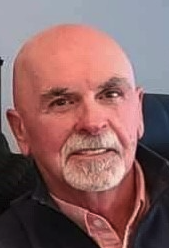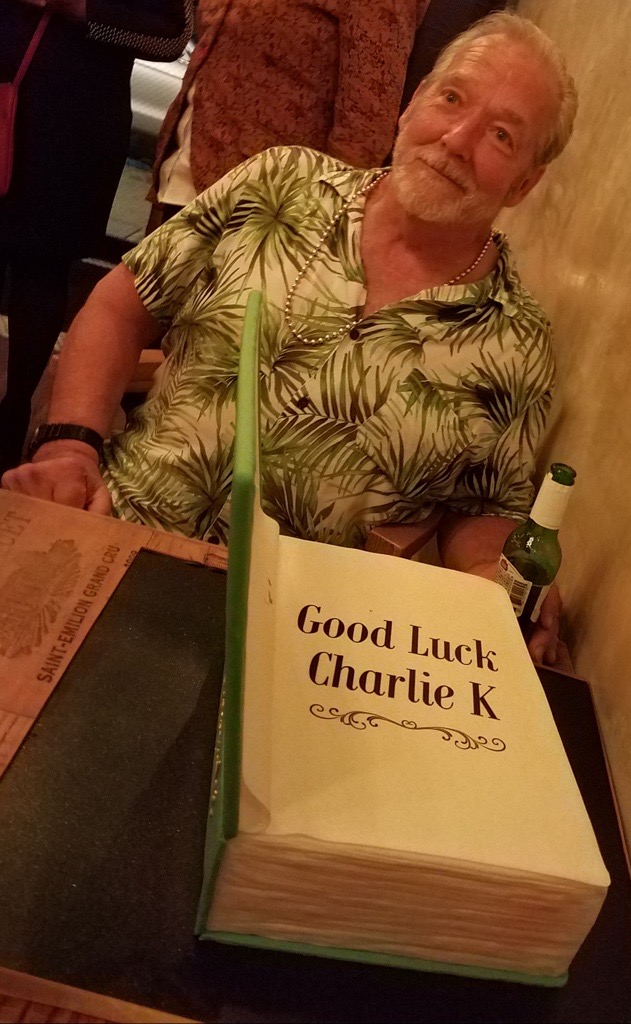Make a donation to the museum
Rescue & Recovery at 20: Dennis Diggins, DSNY
Rescue & Recovery at 20: Dennis Diggins, DSNY
- May 9, 2022
On May 30, we'll mark the 20th anniversary of the formal end to rescue and recovery efforts at Ground Zero. All month long, as we lead up to that milestone commemoration, we'll be sharing the powerful stories of rescue, recovery, and relief workers — many of whom now face 9/11-related illnesses — in recognition of their tireless efforts, sacrifice, and spirit.
The following Q&A features Dennis Diggins, Department of Sanitation.
Where were you on 9/11?
At the time, I was the Deputy Director of the Fresh Kills Landfill [about 20 miles from Ground Zero, on the west side of Staten Island] for the New York City Department of Sanitation. The landfill, located in Staten Island, had closed in March of 2001, but we still had work to do to do. On the morning of 9/11, we watched the towers fall from the top of the landfill. Immediately, we began to mobilize the heavy equipment to send to Ground Zero. I led the convoy personnel and 28 pieces of equipment.
Upon arrival, we began moving large steel and debris off the pile to aid the rescue workers in their search. Around 2 a.m. that night, I escorted the first load of steel back to Fresh Kills Landfill, which had been designated as the recovery site for forensic search by the NYPD and FBI. I returned to work at Ground Zero the following morning. We continued this work for several weeks until we returned to Fresh Kills to work on the forensic recovery operations.

Dennis Diggins
Tell us a little more about the role you played in the rescue, recovery, and relief efforts.
At that time, Sanitation had assigned over 1,000 workers to Ground Zero. This included Sanitation workers, supervisory personnel, and motor equipment support personnel. On September 12th, I was assigned as the Sanitation liaison to the Department of Design and Construction (DDC) Debris Task Force. I was facilitating Sanitation assets to DDC to help in their efforts. As an agency, we each had a variety of different roles. On October 12th, I was reassigned back to Fresh Kills Landfill to oversee DSNY recovery operations on the 7 p.m.-7 a.m. shift. Shortly thereafter, I was promoted to Director of Fresh Kills and supervised all DSNY activities as part of the Fresh Kills Recovery Operation until its completion on July 31, 2002.
Can you describe the bond between yourself and other recovery workers? How has this community impacted you?
I remain close with many of my DSNY coworkers. While DSNY did not lose any personnel on 9/11, we have lost over 100 people to 9/11 illnesses, to date. Many of these souls were good friends whom I will forever miss. We were all committed to performing our duties to the best of our abilities and shared a deep pride in our roles. 9/11 was very personal for the Fresh Kills family. A tractor operator lost his son, a crane operator lost his wife, and a superintendent lost his brother. It hit home for all of us.
Every day, all the agencies would meet to review the operations plan for the day. To this day, on the anniversary of 9/11, we reach out to the same group to check in on one another. While we were only together for 10 months, the operation bound us together for life.
What does May 30th mean to you?
The operations at Ground Zero ended on May 30, but the operations at Fresh Kills did not end until late July. When all was finished, I was very proud of the work we had done. Every day, when my head hit the pillow, I knew we did everything humanly possible to ensure that all WTC material was transported and handled with the utmost respect.
Furthermore, in our efforts to recover human remains and personal effects, the Fresh Kills Multiagency Recovery team worked tirelessly to ensure that all material was searched down to a quarter inch. While the decision about WTC material being placed in Fresh Kills was controversial, today you can stand on the grass covered mound, where the material rests, and look north to the Freedom Tower, where the Twin Towers once stood.
Do you have any health issues connected to your time at Ground Zero?
Yes. I have developed asthma, chronic rhinosinusitis, skin cancer, gastroesophageal reflux disease, and sleep apnea.
To the generation who is growing up with no memory of September 11th, why is it important to share your story and the stories of others with them?
I want them to know that this event deeply touched everyone. Many of us knew someone who perished that day. Three of my childhood friends, all firefighters, died that day. Thousands of stories like these need to be told.
There was a different mood in the days and weeks that followed. There was an overwhelming sense of mourning for those lost, yet a deep caring for the well-being of one another. The level of compassion was awe-inspiring. While it didn’t last forever, it’s an aspect of the event that this generation needs to know is within us. We can come together in the face of great tragedy.
I also want them to know that Sanitation is more than cleaning streets, collecting waste, and clearing snow. When the city needed us, we played a critical role in its restoration.
Anything else you’d like to add?
I worked for DSNY for 35 years. In that time, I was part of the DSNY response to many severe events — hurricanes, blizzards, nor’easters. Our response to the World Trade Center was the most significant of my career. I was never prouder of our department and the work we performed than in the 9/11 clean-up efforts. We paid a significant price in the years following as many of our heroic workers have died from illnesses attributed to that work. Many of us are still suffering. Yet we all say the same thing — we would do it again.
Compiled by Caitlyn Best, Government and Community Affairs Coordinator
Previous Post
Teacher Appreciation Week: Ada Dolch

Ada Dolch was a New York City educator who helped get her students and fellow staff to safety on the morning of September 11. She lost her sister, Wendy, in the attacks. This Teacher Appreciation Week, we are proud to share Dolch's story.
Next Post
Rescue & Recovery at 20: Charlie Kaczorowski, Department of Design & Construction

Charlie Kaczorowski was with the Department of Design & Construction on September 11; he spent months at Ground Zero helping with rescue and recovery efforts. Kaczorowski died this March. Today we honor his sacrifice with a special blog post culled from past Museum interviews.